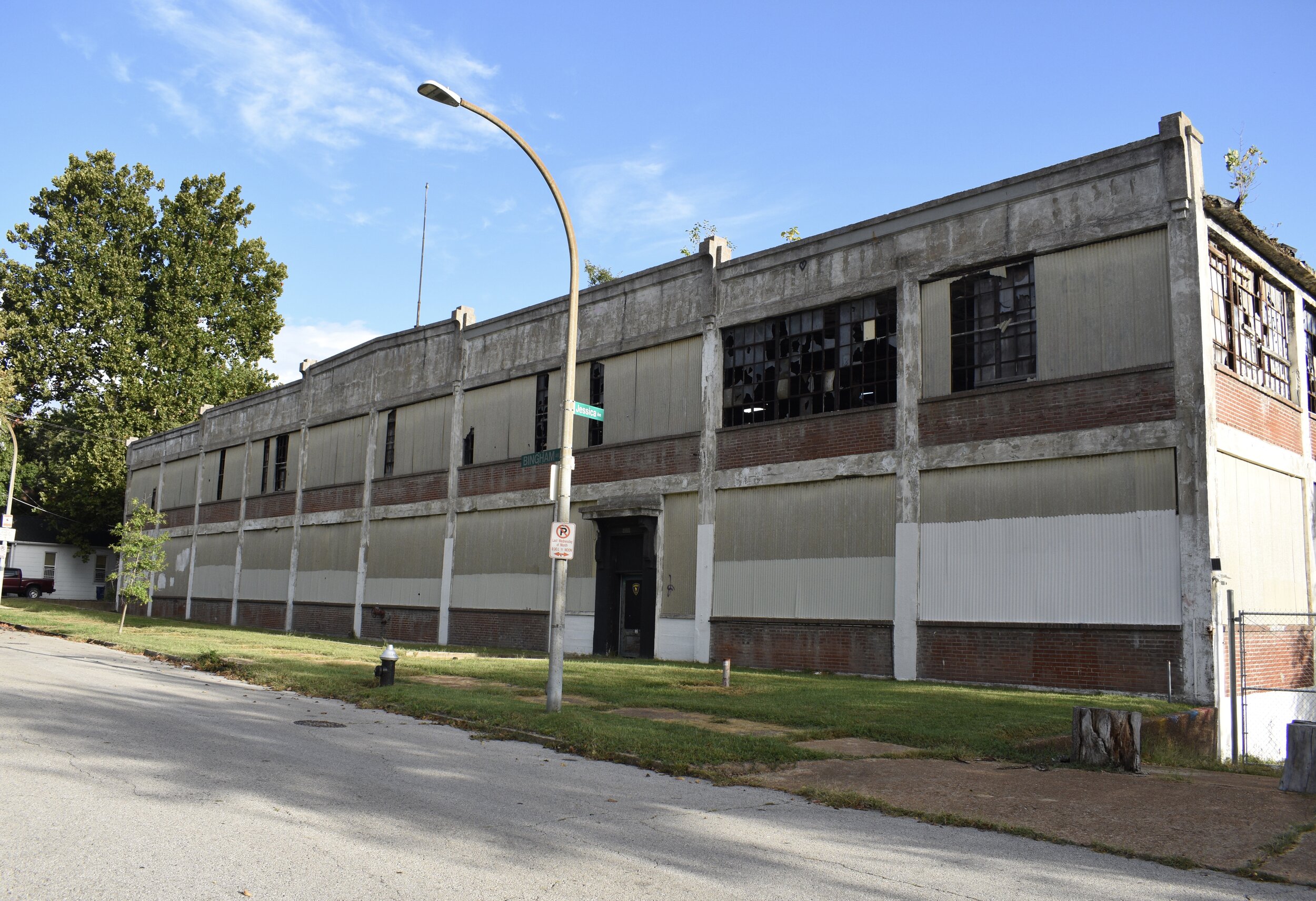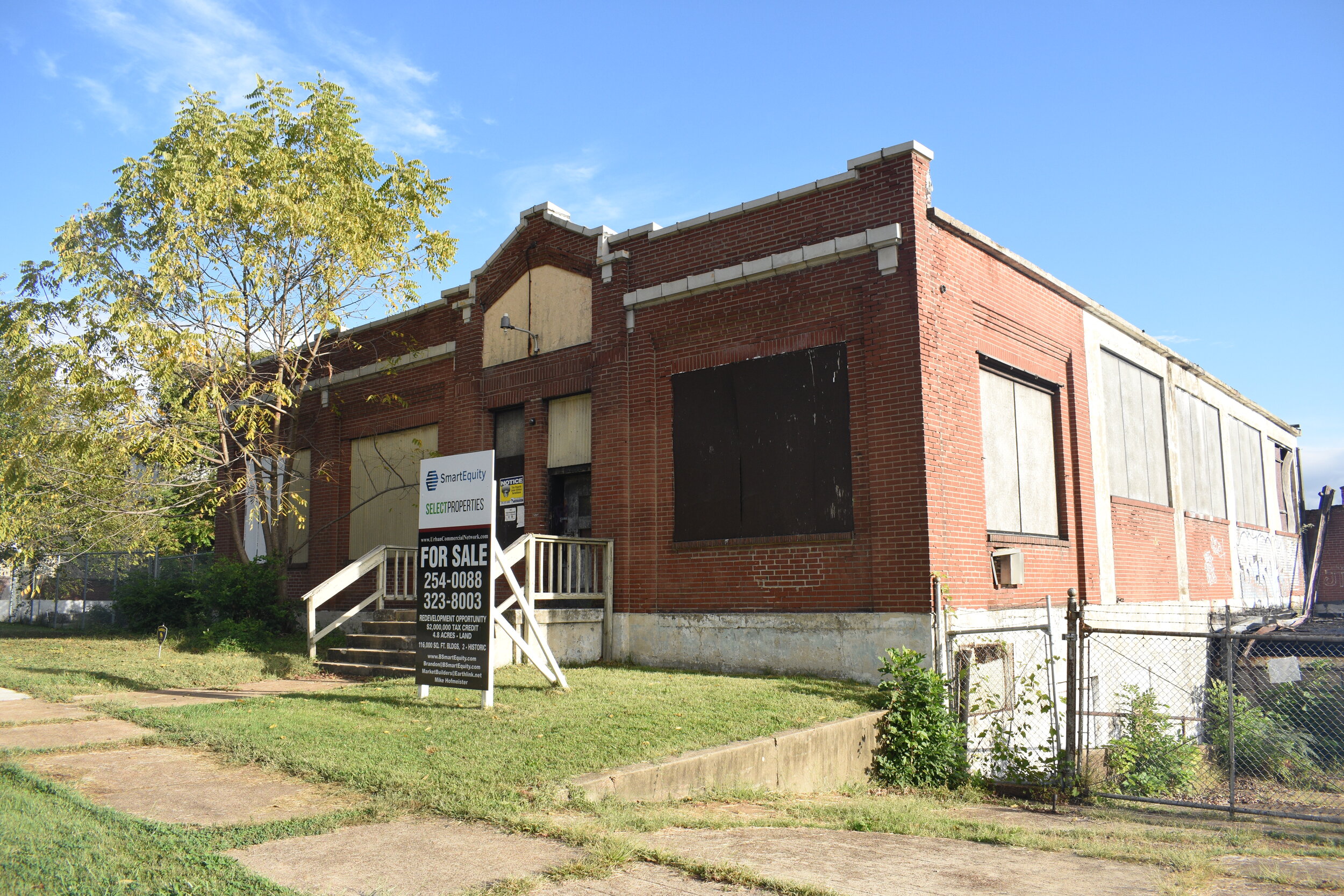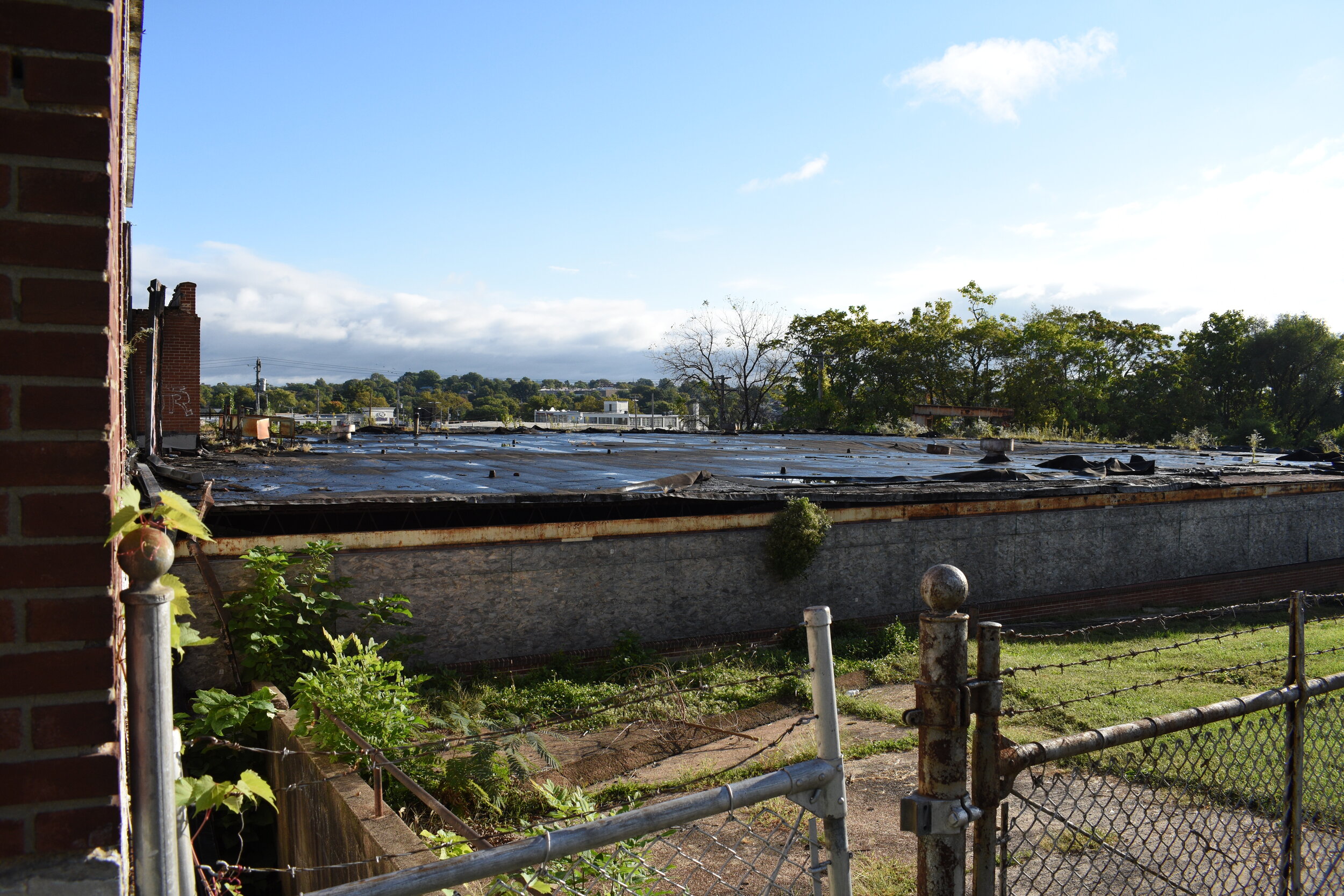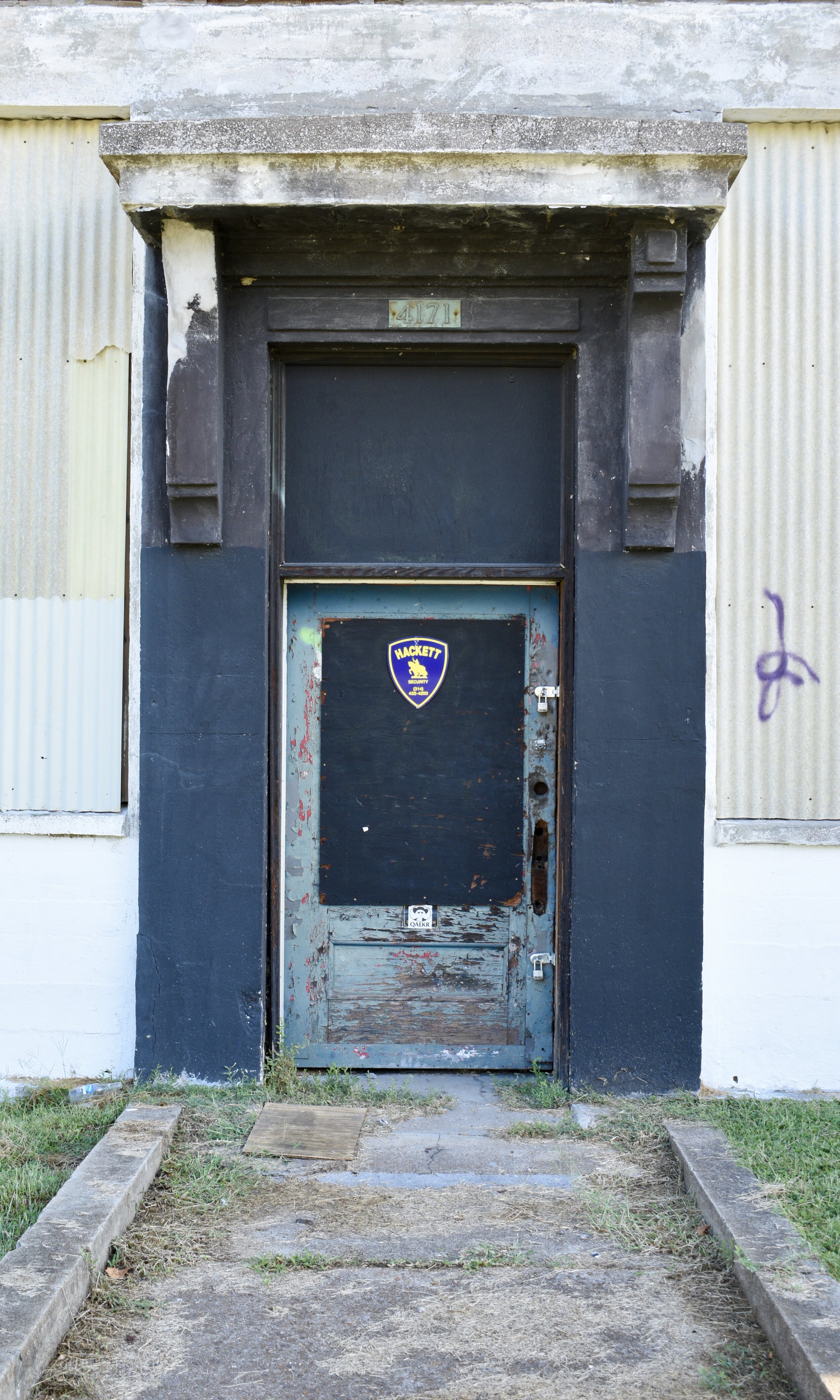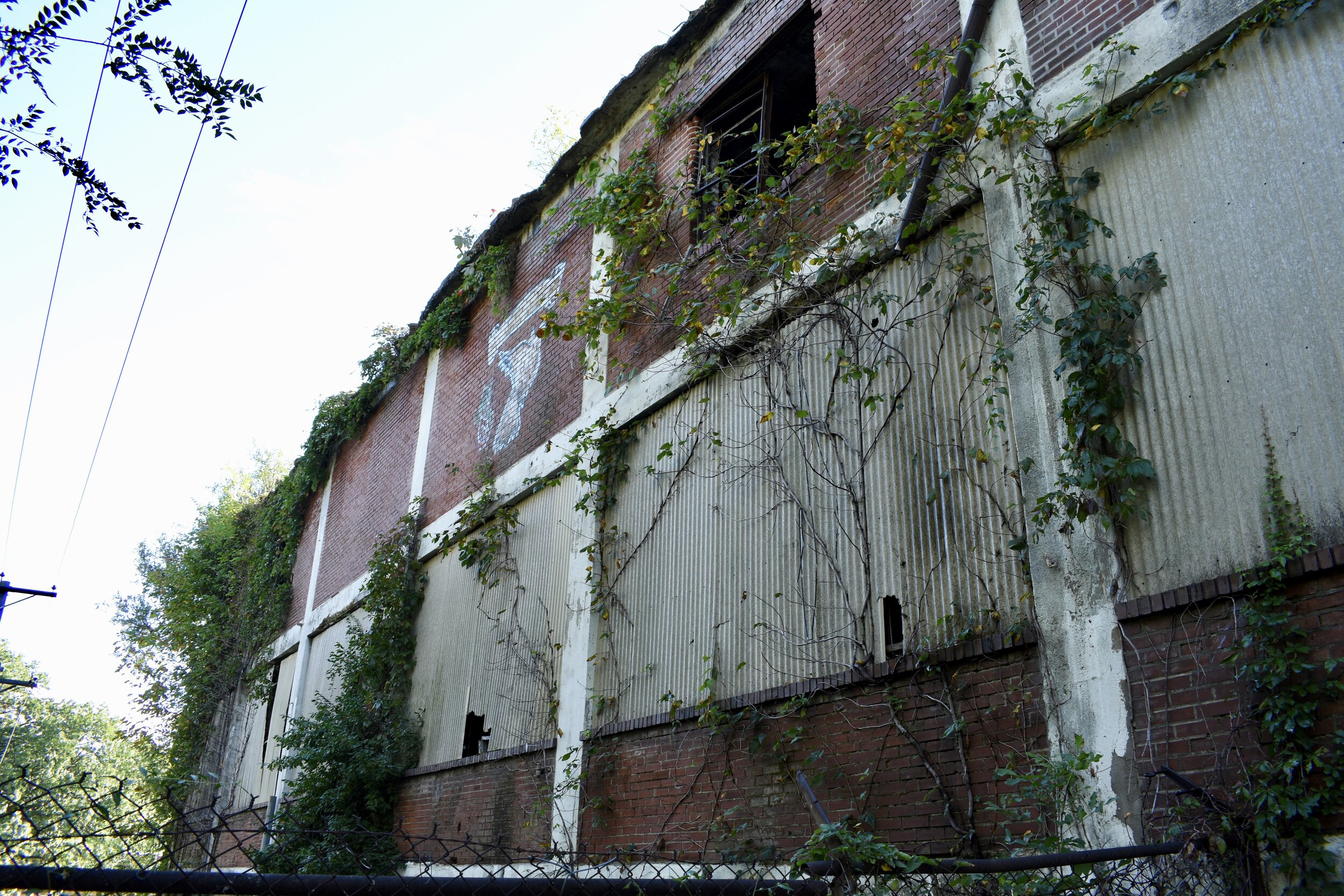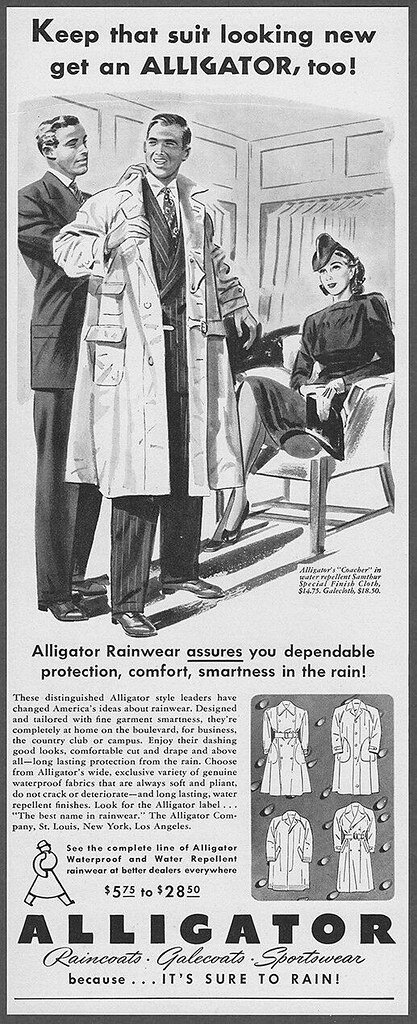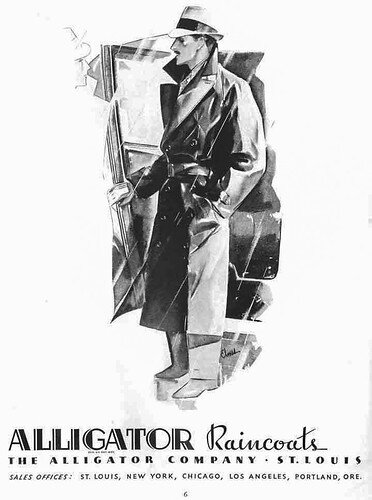My cousin turned me on to Fonda La Poblanita, my new go to for Mexican food. The location is at 3830 Morgan Ford Road right at Bingham Avenue in the Bevo Mill neighborhood.
While parking along Bingham near Oak Hill Elementary School, my car was pointed east. The neighborhood is dense, so there are few places to turn around until you get toward Gravois.
The weird bridge/tunnel section of Gravois was closed at the time, so I had to pull a U-turn. to get back to Morgan Ford. This was the slow down that made me take notice of a sizable former industrial area.
Shannon googled it as we were driving home, “they used to make rain coats”, she said. I knew I’d have to read up on this place.
As with almost all topics related to history I stumble upon, there is already a wealth of information out there.
My three main sources for my understanding are:
National Register of Historic Places Nomination - December, 2012
After a couple clicks, the former factory at 4153 Bingham Avenue at Jessica Avenue was once home to the Alligator Oil Clothing Plant.
Here’s what it looks like today:
Specializing in rain-repellent outerwear the Ferguson Waterproof Company was incorporated before 1911, which later reorganized as the Alligator Oil Clothing Company in 1916. From 1916 through 1918, the company’s manufacturing took place in a two-story factory at 1118 S. Grand. World War I provided impetus for major corporate expansion and construction of the National register-listed plant at 4153-71 Bingham Avenue, St. Louis, MO. The United States Army purchased some three million Alligator raincoats for soldiers, according to an Alligator advertisement. All of these coats were made in St. Louis, and led to the company’s decision to relocate to a large, modern facility with sufficient capacity for large demand. The company’s new facility led to boastful advertising touting its wartime production and the assertion that Alligator’s coats were the only union-made rain gear in the nation. The company’s ads appeared nationally into the 1940s. In 1943, expansion of the plant led to Alligator opening New York and Los Angeles branch offices. During World War II, Alligator enjoyed substantial success as both a military and civilian supplier. In 1966, clothing giant BVD, Inc. acquired Alligator, continuing production at the Bingham Avenue plant until 1971. In 1971, BVD sold the factory complex to Multiplex, Inc., a manufacturer of beverage dispensing equipment and water treatment systems for the foodservice industry. Multiplex left the plant by the late 1990s, and the buildings have been vacant since then.” (source)
Local historian Michael Allen, from the Preservation Research Office worked on a nomination for this complex for listing on the National Register of Historic Places. This is a fascinating and well-researched read.
“Today, the complex awaits a larger redevelopment, but has been incrementally improved to house deconstruction start-up Refab, which has used part of the complex for storage and retail operations. Without (Eric) Friedman’s interest, the historic factory complex may well have been demolished. In fact, the city wrecked the historic smokestack — which had partially collapsed, but could have been restored as a visual anchor — in 2009.”
Other interesting tidbits from the posting above:
Some of the buildings were designed by Leonhard Haeger, the architect who designed the former Peavly Dairy Factory building that once stood at South Grand and Chouteau. It is now a grass field of nothingness.
The factory complex consisted of reinforced concrete, which was a burgeoning technology from the era.
Alligator was the only union-made raincoat manufacturer and there were prominent in the 1940s making both civilian and military attire for the WWII war effort.
In 1966, clothing giant BVD, Inc. acquired Alligator, continuing production at the Bingham Avenue plant until 1971 when they sold the factory to Multiplex, Inc., a manufacturer of beverage dispensing equipment and water treatment systems for the foodservice industry. Multiplex left the plant by the late 1990s, and the buildings have been vacant since then.
If you want to learn more, check out the Missouri Department of Natural Resources document for nomination to the National Register of Historic Places. It is utterly fascinating.
Per the For Sale sign on the property, it appears the developer Allen mentioned above, Eric Friedman, is now trying to sell the massive property that includes three buildings and 116,000 square foot of property spanning 4.8 acres. And if you zoom in on the sign, there is a guy with an earthlink.com email…as a hotmail Gen-Xer, I respect the hold out.
So now when I roll around this part of Bevo, I’ll have thoughts of soldier raincoats in my head…I wonder if the neighborhood smelled like chemicals back in the day.
History is around every corner in this city, and the former Alligator Oil Company factory complex is no exception. Had it not been for the machetes and chiles rellenos at Fonda La Poblonita (some of the best in St. Louis), I never would have stumbled across this place.
Here’s to hoping it can find new use, by either ReFab or another owner.


